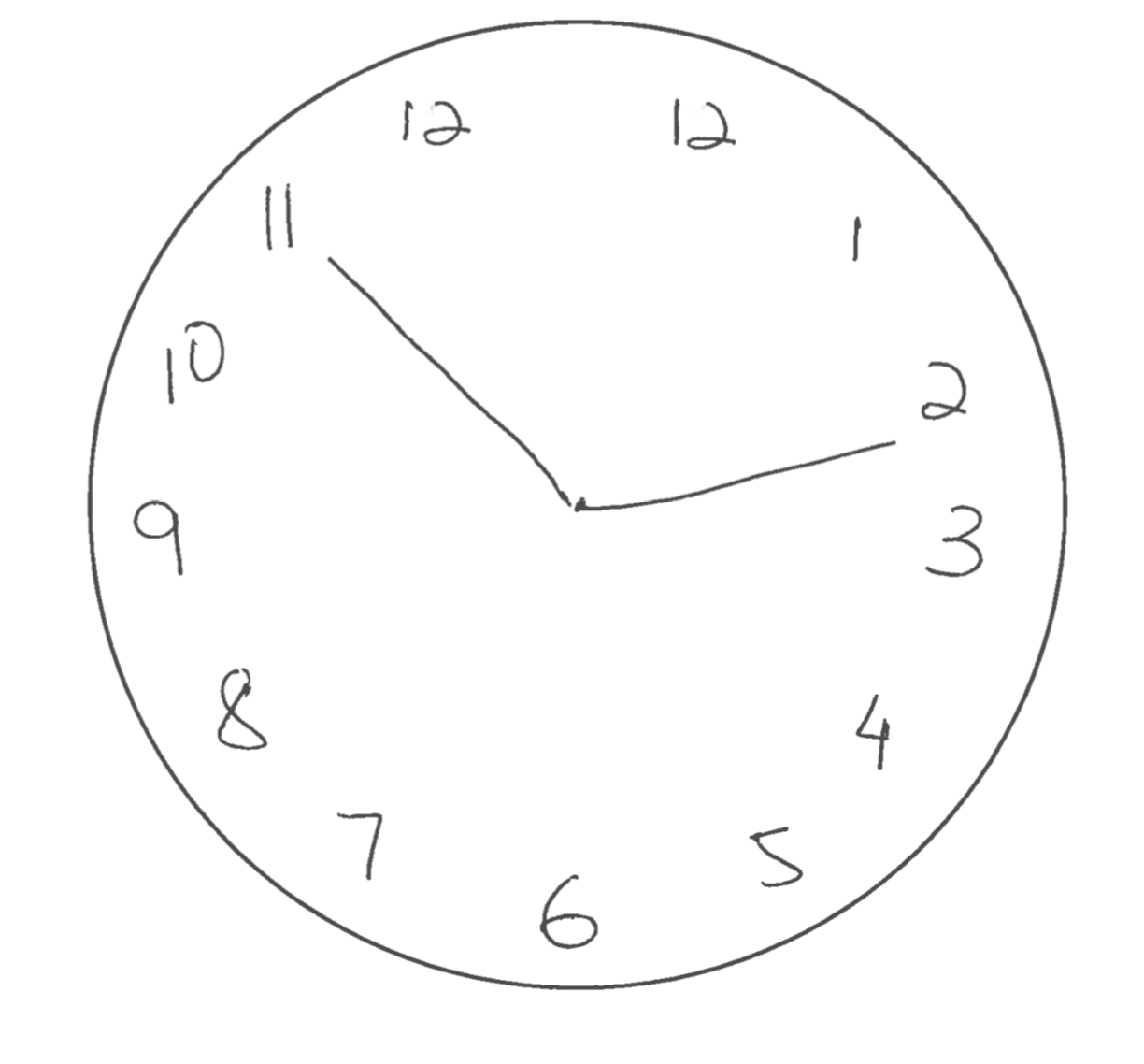Section 1: Cognition
Clock Drawing Test: Getting Started
Before beginning the test, make sure to ask the interviewee if they have glasses that they should be putting on before starting. The printed copy of the EFS should then be folded along the indicated dotted line, and then handed to the interviewee with the clock facing up. Then provide the instructions:
“Please imagine that this circle is a clock. I would like you to place the numbers in the correct positions, then place the hands to indicate a time of ‘ten after eleven.’”
If the interviewee requires clarification, instructions may be repeated once. Other than that, no other clarification or input is permitted.
Clock Drawing Test: Scoring
In order to score the Clock Drawing Test, the following imaginary lines are required for interpretation, forming four quadrants, and inner and outer portions of the circle:
Any numbers that are bisected by horizontal or vertical imaginary lines should be included in the quadrant in the clockwise direction.
If the hands and numbers are all present and in the correct position, this is a Pass, and an EFS score of 0. For this to be the case, there must be:
No added numbers
No duplicate numbers
No missing numbers
Proper number sequence
Three numbers in each quadrant (rotate bisected number clockwise)
No numbers partially or completely in inner circle
For example, see below
If the clock is drawn with errors, this is a Fail. A Fail with Minor Errors is an EFS Score of 1, and a Fail with Major Errors is an EFS Score of 2.
For a Fail with Minor Errors, Hands and numbers are all present, and hands are correctly placed. However, there are minor spacing errors or hands are of equal length. There must be:
No added numbers
No duplicate numbers
No missing numbers
Proper number sequence
Hands correctly placed
However, there is at least one of the following errors:
At least one quadrant contains two or four numbers
Numbers cross partially or completely into inner circle
Hands correctly placed but equal in length
For examples, see below
A Fail with Major Errors is given a score of 2, and is when at least one of the following has occurred:
Additions, duplications, or omissions of numbers
Problems with the sequence or direction of numbers
Hands that are clearly wrong or missing
Major spacing errors (more than 4 or fewer than 2 numbers in a quadrant)
For examples, see below
The Clock Drawing Test is the first item on the EFS, because the result will inform how the rest of the Scale is administered. If the Interviewee fails (i.e. a score of 1 or 2) then going forward, for all items marked with asterisks the interviewer should try to ascertain the best information possible, including by prompting and receiving input from the person accompanying the interviewee.
If it is the case that the interviewee fails, it should be made clear that the accompanying person may participate when appropriate, but that questions will still be directed toward the interviewee.
If the Interviewee passes the Clock Drawing Test, all responses should come the Interviewee alone.
Examples of Clock Drawings
Pass
Fail with Minor Errors
Fail with Major Errors













